2K distribution and 1080p HD broadcast are going to receive new attention at NAB. That’s right, ‘2K’ is not a typo, that is what I meant. Broadcast and distribution in 1080p is being adopted slowly, but not nearly as slowly as 4K.
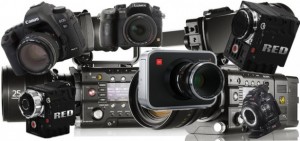
You may be one of thousands of camera purchasers who invested in 4K after clever marketing by the dozen or so camera companies out there pushing their ‘revolutionary’ new products. So, what do you do now?
An “ePTZ”, or Multi-Cam adapter system may be your answer.
What is ePTZ?
The CCTV security camera market was the first to take PTZ cameras into the mainstream, and is also the first to popularize ePTZ cameras as well.
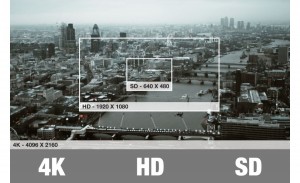
The same wide angle image is cropped digitally to create new shots. When SD was still mainstream, HD cameras were used. Now that HD is mainstream, cameras with 4K sensors are used.
The MOVI camera by Livestream takes the Concept of ePTZ into an easy app that allows users to quickly create and add movement for up to 9 different angles. The format is made for the consumer to entry level prosumer market. The idea has had some press raving about the new product, while others see it as a great concept being put into a 4K camera with a small sensor.
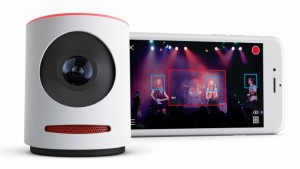
However that doesn’t solve the problem of tens of thousands of 4K professional camera owners. Who wants ANOTHER 4K camera, and with a tiny sensor? Livestream is correct to move deeper into the streaming space, a bright future in media, so your best bet is to do live production. Professionals need that same ePTZ with live cutting and camera movement capability built in, but able to keep the broadcast quality images.
This NAB Show, we may find the solution we have been looking for with the Datavideo KMU-100 4K Multi-Channel Unit This new product will take two 4K camera inputs and create up to 8 different shots simultaneously.
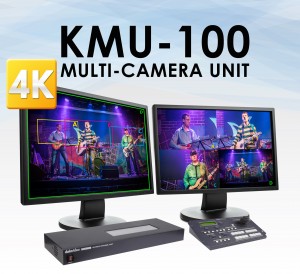
The highest 4K quality currently available is able to be captured with 12G SDI inputs, which makes the KMU-100 a product that will not become outdated until whenever 5k or 6k becomes a thing.
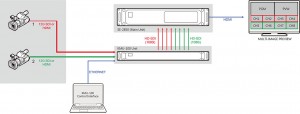
The Datavideo KMU-100’s ability to take two 4K camera inputs provides two perspectives. This is important to make professional live productions get the coverage that they need, and with the ability to send all the HD signals to another switcher, monitor, ISO recorders, anything with an SDI input, the versatility provides a breath of fresh air for frustrated early 4K adopters.
The concept of ePTZ and multi-camera will be the home of 4K for at least a few years, as consumers are happy with 1080p, which is not itself even completely mainstream yet.
4K cameras have been used in film and tv production for a number of years now. Until recently, most content filmed in 4K was always converted to 2K for its distribution format. The advantage of capturing content in 4K resolution was the ability to color grade and crop framing without any negative effect on quality. But you are still going to distribute in HD, no matter what.
4K TVs are already entering the market place as TV manufacturers are seeing their sales slump from big screen LCD TVs reaching a market saturation. If only consumers had an easy way to get glorious 4K content on them….
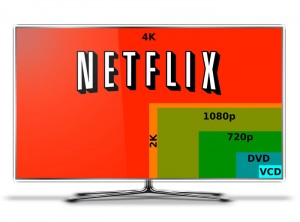
The Amazon of online streaming, Netflix is offering 4K streaming, but at reduced bitrates due to a cap in available bandwidth. Netflix already occupies 20-30% of all internet bandwidth in the United States with mostly 720p streams, so if anything, Netflix will lead the charge into 4K distribution and at the same time stall it by starting another conflict with Internet providers.
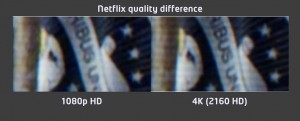
I sincerely hope that you are one of the few who utilizes 4K for cinema production or another application. However for most multi-media production companies and professionals, HD gigs are still the norm and that’s not going to change any time soon. Early adopters of 4K are hurting, I know. I’m one of them. I’m frustrated, and like you, I’m looking to make my money back, fast.
The Datavideo KMU-100 4K Multi Channel Unit is good news, and it can be seen at the Datavideo booth at NAB, South Hall, booth number SL#8011.
As a special promotion, Datavideo is offering free guest entry to the show. Simply register for a badge using the code: LV5447 at www.nabshow.com
(LuckyMig is the production company of Miguel Galindo, an independent director and producer.)
For any questions regarding this article, email TheLuckyMig@gmail.com


One thought on “How to Use Your 4K Camera in an HD World”